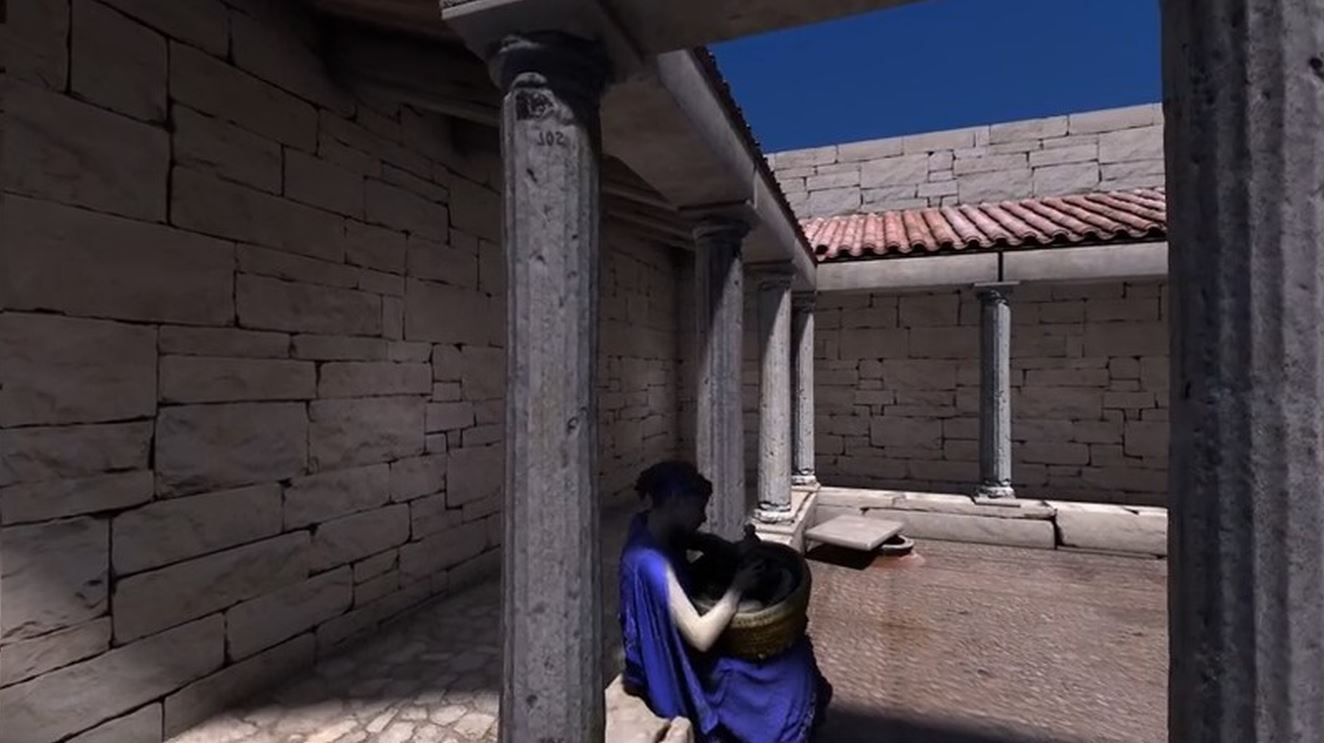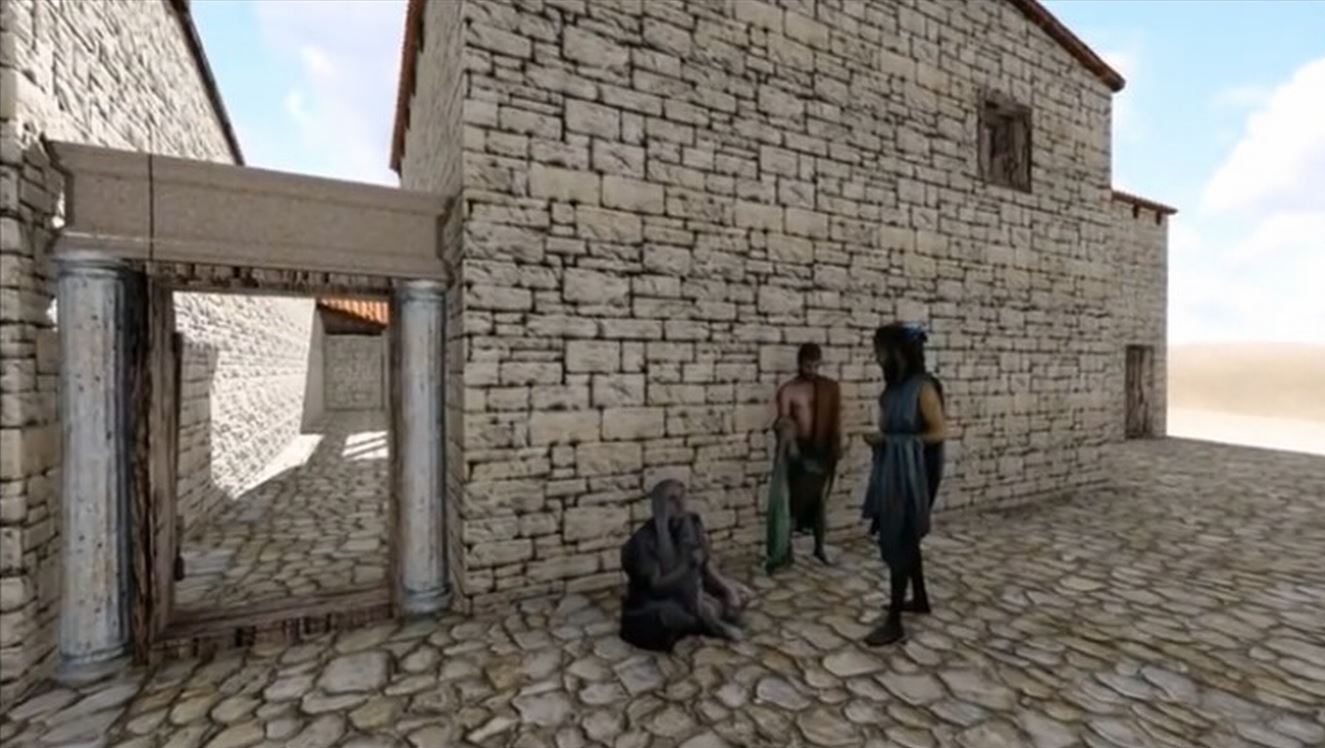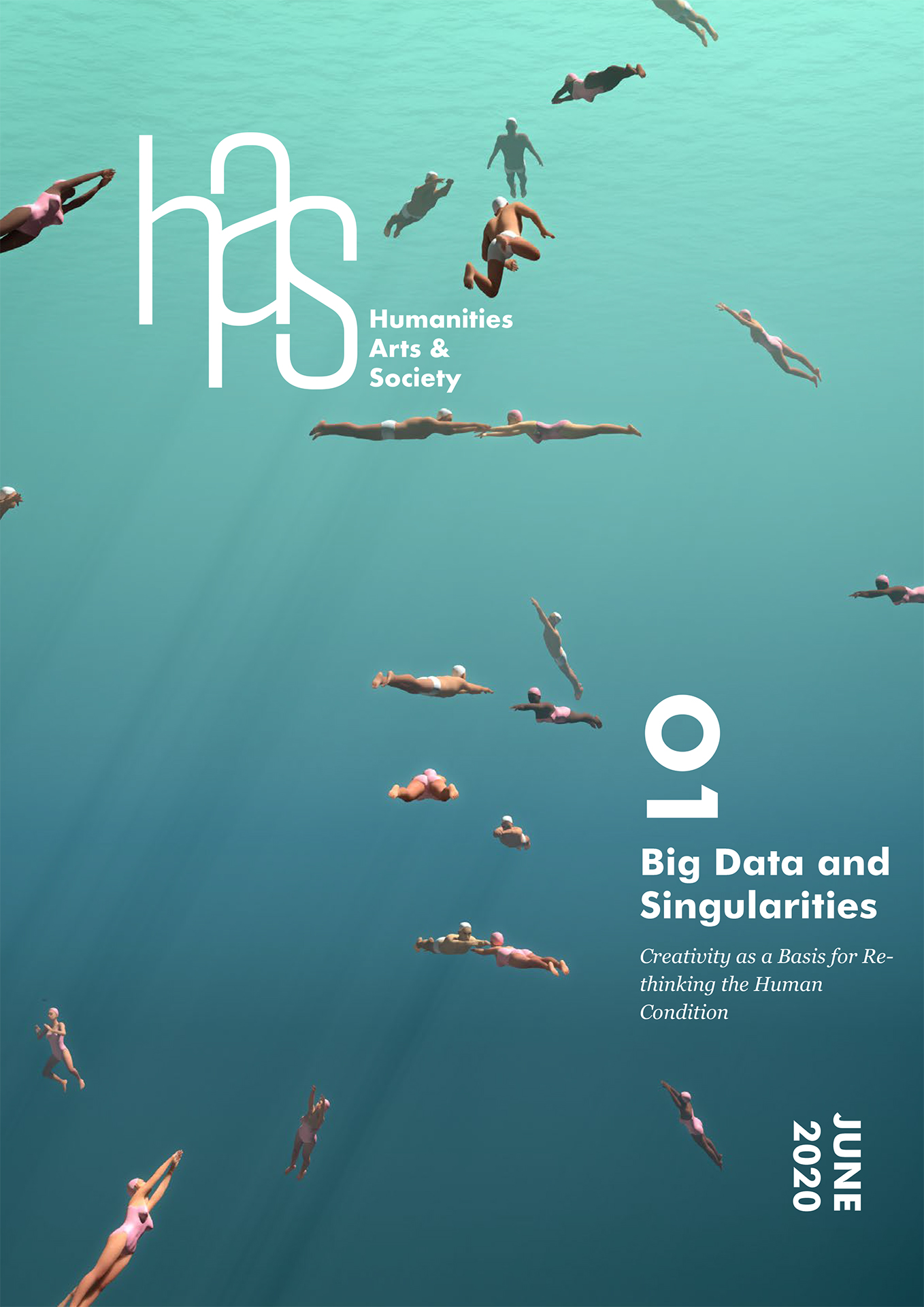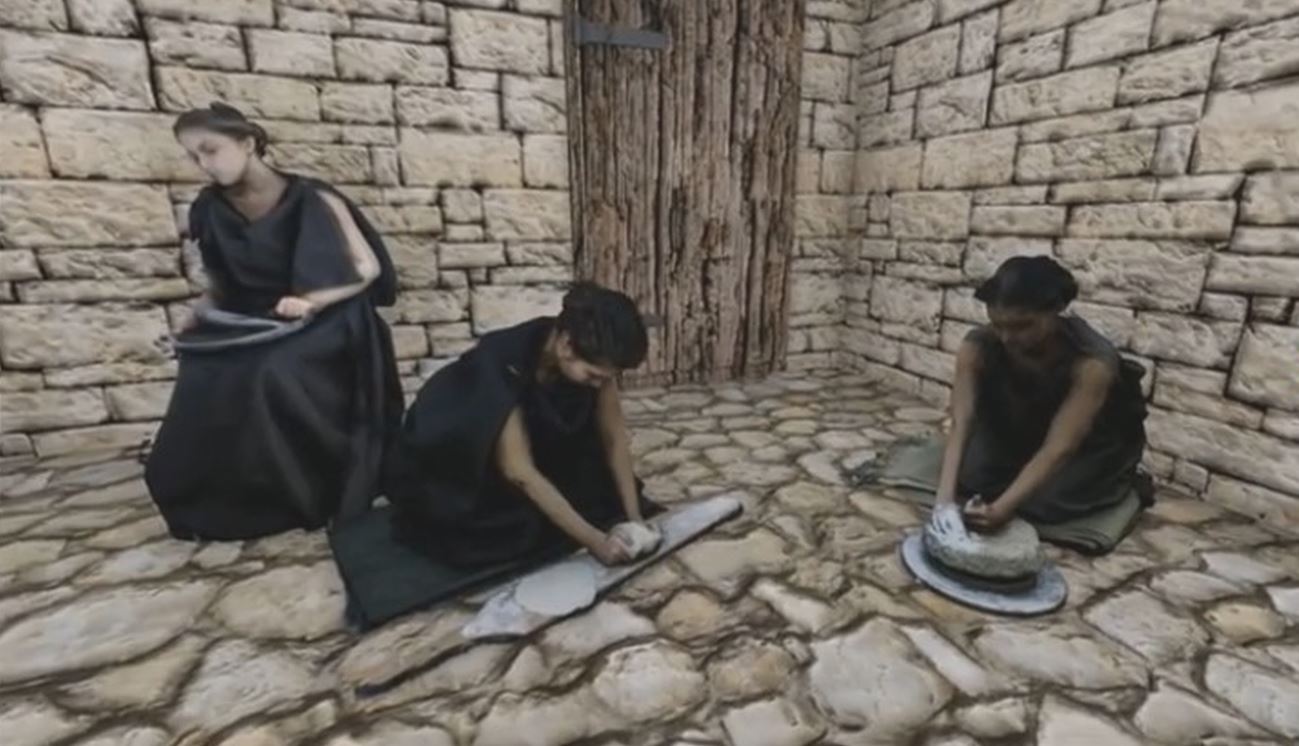Big Data and Immersion Into Archaeological Reconstructions

Big Data
Big Data defines a multi-disciplinary domain within the current informational society, which acts as a continuous data provider. As the term indicates, Big Data is concerned with high volumes of data, of the order of exabytes (one exabyte = one quintillion bytes). According to the Domo Report of 2018, “Over 2.5 quintillion bytes of data are created every single day…. By 2020, it’s estimated that 1.7MB of data will be created every second for every person on Earth.” However, Big Data is not only defined by the volume of data, but by its velocity and variety, as the most-cited Gartner definition from 2001 stipulates (Gantz & Reinsel, 2011).
Big Data has stimulated the development of the sciences and technologies required for data processing and valorization. The technologies behind Big Data, such as cloud computing and unstructured data bases (NoSQL), have emerged and evolved out of necessity to find solutions to manage large amounts of information: “Big Data is less about data that is big than it is about a capacity to search, aggregate, and cross-reference large data sets” (Boyd & Crawford, 2012).
Early research reports such as those produced by Gantz & Reinsel (2011) and Manika et al. (2011) have examined the potential of Big Data in several domains— information retrieval, data governance, security, and privacy. Big Data is present in everyday life in almost every domain— social media, automotive, government, healthcare, banking, manufacturing, utilities, and entertainment (World Economic Forum Report, 2012).
Positive Big Data utilizations can be noted in medicine (identification of diseases in their early stages), urban services, education (Ştefan, 2017), research, as well as in improvements in operational efficiencies, economic growth, well-being, and security (Gang-Hoon Kim et al., 2014). However, there are voices that criticize the use of Big Data, even calling it a danger to democracy because of the potential for abuse (Gang-Hoon Kim et al., 2014) or misuse (O’Neil, 2016).
The main purpose of the collection and use of Big Data is to value the data, to extract information that could not be captured through the application of traditional analytical methods. These insights help in the identification of patterns, unique or special traces, trends, and finally, leading to better decision-making. Ştefan (2017) states that Big Data enables “a progression in analytics that moves from hindsight to insight to foresight.” That is why Big Data is closely connected to an unprecedented evolution of data science technologies, of which the most popular are data mining, machine learning, and Artificial Intelligence.
In the interface between the exact sciences and human sciences, specifically in the field of archaeology, Big Data has begun to be considered in the last two decades as both a technological challenge and an opportunity to facilitate the work of interpretation. (1)
Nevertheless, when applied to archaeology, Big Data has its limitations (Gatiglia, 2015): “Big Data approaches are effective on account of the fact that they inform, rather than explain, and that they expose patterns for archaeological interpretation, providing the opportunity to test new hypotheses at many levels of granularity. Data visualization can provide an important contribution to the comprehension of great amounts of data, and to make anomalies and correlations emerge.”

Virtual Archaeology
A large amount of data is used in past reconstructions, in the form of 3D reconstructions, augmented, mixed, or virtual reality (Bonde & Houston, 2012). In the last few decades, archaeology has developed a new subdiscipline, Virtual Archaeology (Reilly, 1991; Carter, 2017; López-Menchero Bendicho et al., 2017), offering complex three-dimensional images which allow the viewer be immersed in virtual volumetric reconstructions by means of instruments, data gloves, and position trackers, which provide sensory information and measure the user’s response. Virtual Archaeology (Reilly, 1991) deals with the reconstruction of artifacts, buildings, and landscapes of the past, still existing or not, but known to us thanks to archaeological, historical, or artistic sources, through three-dimensional models, hypertext, and multimedia solutions.
How does Big Data work in Virtual Archaeology? Databases include data collected from the archaeological record, spatial data, data on the natural environment, data on materials, data on architecture, nutrition, and various technologies. An additional, important source of data can come from archaeological experiments and re-enactments (body movements, gestures). In Virtual Archeology, Big Data can be used to model a past reality using a wealth of information and sources, and bring this model into the present, through modern techniques and technologies—3D reconstructions, virtual museums, virtual tours, gaming, augmented reality, and virtual reality.
Unlike in other areas, archaeological Big Data does not have velocity characteristics, but can become massive through its diversity of sources or atomicity. A 3D model is constructed from a very large dataset of points, and can be further corrected or enriched by applying other data (photographs), or advanced graphical algorithms. The use of Big Data in archaeology presents similarities with other domains (collection, analysis, valorization), but also constitutes a different paradigm in the sense that human contributions (such as imagination and intuition) are allowed to play a major role in understanding the past.
Immersion
Specific to contact with an artificial reality, whether the result of reading a text or contemplating a work of art, is the creation of a state of consciousness, called immersion, that introduces the receiver to a state of “being there.” Immersion (Reid et al., 2005) is the quality of a work of art—be it a text, art installation, architectural object, or video game—that allows the receiver to mentally transpose him or herself into an artificial environment.
Big Data, by allowing the creation of augmented immersive environments (Gheorghiu & Ştefan, 2015) that are clear examples of digital art, can act on the human psyche, producing a detachment from the real and a sense of being present in a different reality, similar to an artistic experience. This immersive detachment is the key to a new, 21st century archaeology, which will make environments as immersive as possible—not only as hyper-realistic representations, but as sensorial experiences—in which the individual can navigate in time and space, and can have psychic and sensory experiences with the help of data gloves or other emergent technologies. Thus, archaeological research also becomes artistic research (Gheorghiu & Barth, 2019), due to the combined creation of groups of experts in archaeology, anthropology, graphic design, and IT.

The Time Maps Project—Big Data and the Singularity of the Place
The Time Maps project is characterized by this type of syncretic approach. It reconstructs the past of certain sites, using information from numerous sources, both from Romania and from other European countries (Portugal, Italy, Sardinia, Greece, Great Britain) and different media environments, from 2D and 3D collections to real and virtual reconstructions.
The project proves how broad is the area of information that can be used when employing both objective, scientific, and subjective, artistic elements to describe a place. For each chosen location, the most representative environments were reconstructed on different chronological layers, including architectural structures, objects, the technology of these objects, and re-enactments developed with the use of these objects, made with real, 3D-scanned, human characters. The augmentations of the virtual reality were achieved by visually augmenting the texture of the environments or by lighting studies (Gheorghiu, 2018). The types of augmentation were realized through the use of art (Gheorghiu, 2012), in the form of visual metaphors, which amplified the significance of a place.
To conclude, the role of this paper is to demonstrate that Big Data and the singularities paradox can, with the help of near-future archaeology, become a method that transforms the complex data of the individuality of a place into a miraculous human experience of the transcendence of time.
References:
Bonde, S. and Houston, S. D., 2012. Re-presenting the Past: Archaeology Through Text and Image. Oxford: Oxbow Books.
Boyd, D., and Crawford, K., 2012. “Critical Questions For Big Data.” Information, Communication, & Society 15: 662–679.
Carter, W., 2017. Virtual Archaeology, Virtual Longhouses and “Envisioning the Unseen” Within the Archaeological Record. Western University Electronic Thesis and Dissertation Repository, 2017, accessed January 2020.
Gang-Hoon Kim, Silvana Trimi, and Ji-Hyong Chung, 2014. “Big-Data Applications in the Government Sector.” Communication of the ACM, 57(3).
Gantz, J., and Reinsel, D., 2011. Extracting Value From Chaos. Proceedings of IDC iView, accessed January 2020.
Think Big About Data: Archaeology and the Big Data Challenge, Fokus: Open Access & Open Data, accessed January 2020.
Gheorghiu, D. and Barth, T. (eds.), 2019. Archaeological Practices and Artistic Research. Oxford: Archaeopress.
Gheorghiu, D., 2012. Meta- phors and Allegories As Augmented Reality. The Use of Art to Evoke Material and Immaterial Objects. In: Back-Danielsson, I-M and Fahlander, F. (eds.), Encountering Imagery. Materialities, Perceptions, Relations. Stockholm Studies In Archaeology, vol. 57. Stockholm: Department of Archaeology and Classical Studies, Stockholm University, 177-186.
Gheorghiu, D., 2018. Lighting In Reconstructed Contexts: Experiential Archaeology with Pyrotechnologies. In: Papadopoulos, C. and Moyes, H. (eds.), The Oxford Handbook of Light in Archaeology, Oxford Handbooks Online, DOI: 10.1093/oxford- hb/9780198788218.013.28.
Gheorghiu, D., and Ştefan, L., 2015. Augmenting Immersion: The Implementation of the Real World in Virtual Reality. In: Börner, W. & Uhlirz, S. (eds.), The 20th International Conference on Cultural Heritage and New Technologies, CHNT 2015. Vienna, Museen der Stadt Wien, Stadtarchäologie.
López-Menchero Bendicho, V.M., Flores Gutiérrez, M., Vincent, M.L., Grande León, A., 2017. “Digital Heritage and Virtual Archaeology: An Approach Through the Framework of International Recommendations.” In: Ioannides, M., Magnenat-Thalmann, N., Papagiannakis, G. (eds.), Mixed Reality and Gamification for Cultural Heritage. Springer, Cham.
Manyika, J., Chui, M., Brown, B., Bughin, J., Dobbs, R., Roxburgh, C., Hung Byers, A., 2011. Big Data: The Next Frontier for Innovation, Competition, and Productivity, accessed January 2020.
O’Neil, C., 2016. Weapons of Math Destruction: How Big Data Increases Inequality and Threatens Democracy. Penguin Books Limited.
Reid, J., Geelhoed, E., Hull, R., Cater, K., Clayton, B., 2005. Parallel Worlds: Immersion In Location-Based Experiences. Proceedings of the SIGCHI Conference On Human Factors In Computing Systems, New York, 1733–1736.
Reilly, P., 1991, Towards a Virtual Archaeology. Computer Applications and Quantitative Methods in Archaeology,1990 (BAR International Series 565). Tempus Reparatum, Oxford, 132-139.
Ştefan, L., 2017. Big Data to Improve the Quality of Learning in Higher Education. Opportunities, Offerings and Challenges. Proceedings of The 13th International Scientific Conference eLearning and Software for Education, Bucharest, Romania, Volume 2, 295-303.World Economic Forum Re-port, 2012, accessed January 2020.
Dragoş Gheorghiu is an anthropologist and experimental archaeologist whose studies focus on the process of cognition and material culture. His most recent research is concerned with the reconstruction of ancient technologies in context, as well as their virtual reconstruction and exploration using AR and MR techniques. Professor Gheorghiu is author and co-author of multiple books and has a sustained publication activity on prehistoric material culture and semiotics in Europe.
Livia Ştefan is an independent researcher with a PhD on e-learning in 3D online virtual worlds. Her current research interests include e-learning and developing virtual and augmented reality environments, including educational games, and human-computer interactions for optimizing the learning. She is a professional member of IEEE Computer Society and Association for Computing Machinery (ACM).
Dragoş Gheorghiu is an anthropologist and experimental archaeologist whose studies focus on the process of cognition and material culture. His most recent research is concerned with the reconstruction of ancient technologies in context, as well as their virtual reconstruction and exploration using AR and MR techniques. Professor Gheorghiu is author and co-author of multiple books and has a sustained publication activity on prehistoric material culture and semiotics in Europe.
Livia Ştefan is an independent researcher with a PhD on e-learning in 3D online virtual worlds. Her current research interests include e-learning and developing virtual and augmented reality environments, including educational games, and human-computer interactions for optimizing the learning. She is a professional member of IEEE Computer Society and Association for Computing Machinery (ACM).


